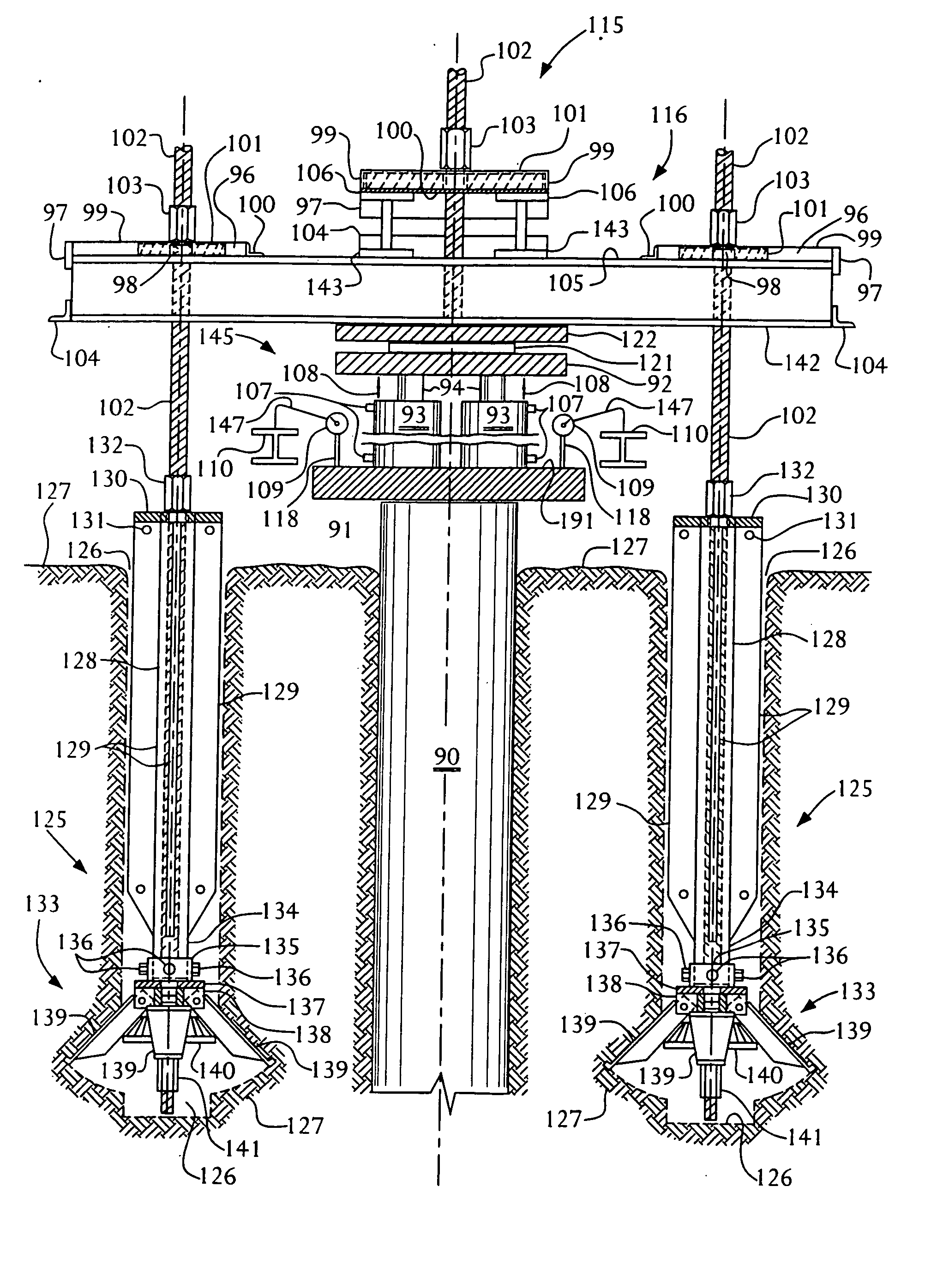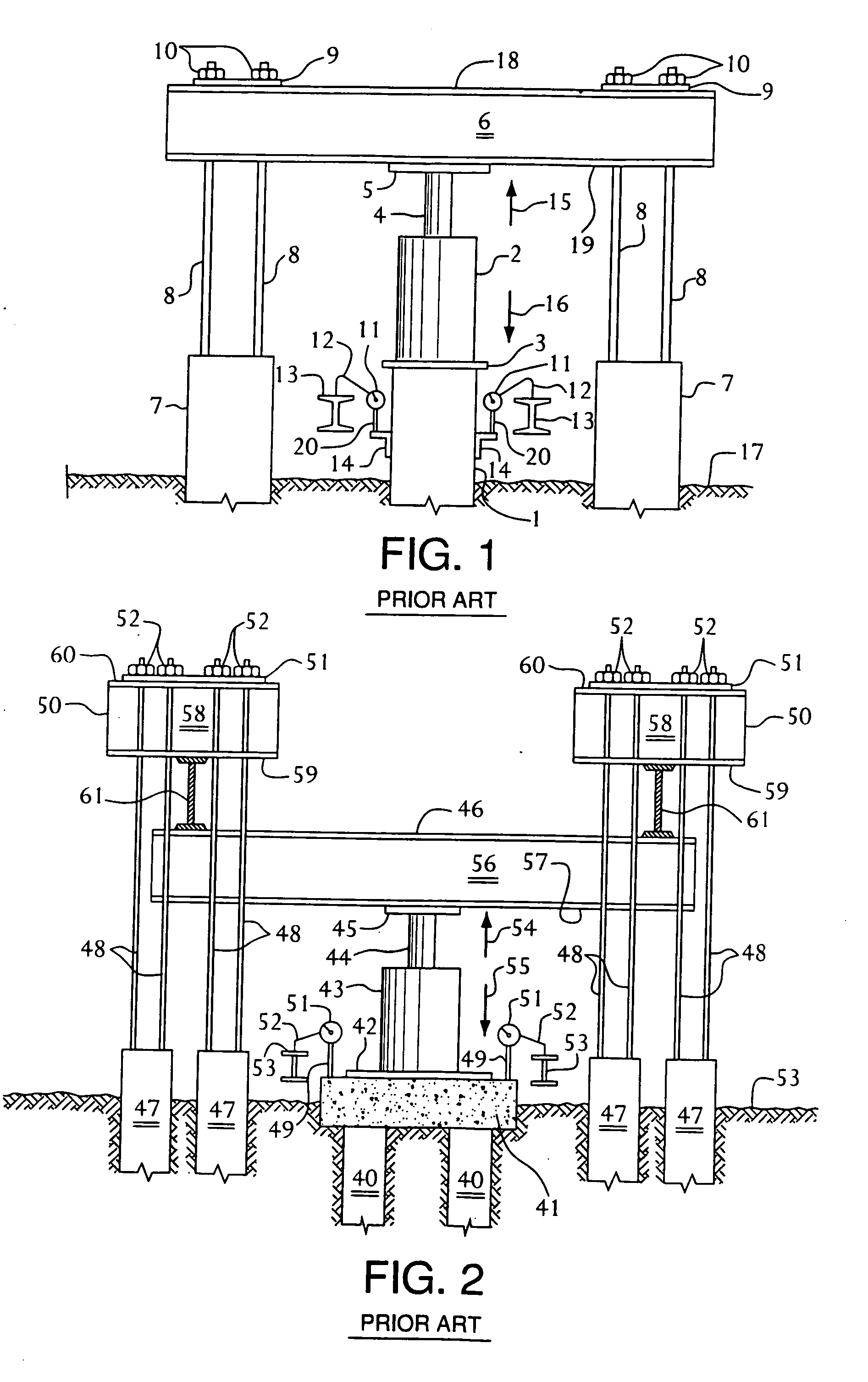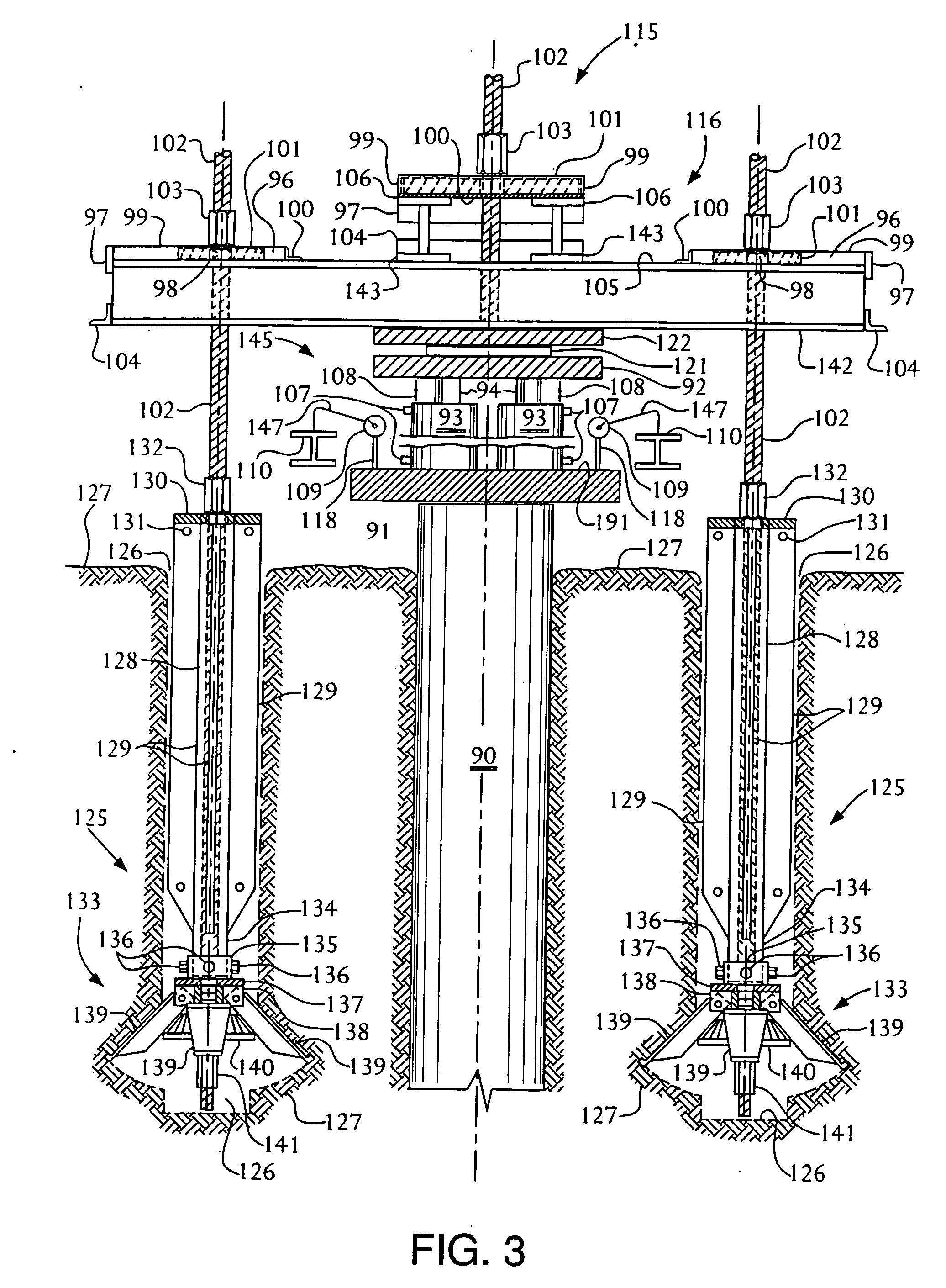Pile testing reaction anchor apparatus and method
a technology of reaction anchors and piles, applied in the direction of instruments, structural/machine measurement, elasticity measurement, etc., can solve the problems of large installation cost of driving into the soil one, two, or more pairs of anchor piles, and difficulty in handling the long and heavy anchor piles required
- Summary
- Abstract
- Description
- Claims
- Application Information
AI Technical Summary
Problems solved by technology
Method used
Image
Examples
Embodiment Construction
[0040]FIG. 1 and FIG. 2 depict apparatus and method representing the conventional testing apparatus and method for testing vertical piles, as shown on ASTM D1143-81(reapproved 1987). FIG. 1 depicts the conventional testing apparatus and method for testing a single pile. FIG. 2 depicts the conventional testing apparatus and method for testing a group of piles.
[0041] Referring now to FIG. 1, a single pile 1 is shown as having been driven into soil 17. A pair of anchor piles 7 also have been driven into soil 17, at a distance at least seven feet away from or clear of pile 1, i.e., away from the pile 1 under test. A bottom flange 19 of a test beam 6 is set on top of a bearing plate 5 of a piston ram 4 of a hydraulic cylinder 2. The hydraulic cylinder 2 is set on a test plate 3, which is centered on top of the individual pile 1, i.e., the single pile 1.
[0042] The test beam 6 is tied to the anchor piles 7 by means of a series of connecting rods 8, a pair of plates 9 on a top flange 18 o...
PUM
 Login to View More
Login to View More Abstract
Description
Claims
Application Information
 Login to View More
Login to View More - R&D
- Intellectual Property
- Life Sciences
- Materials
- Tech Scout
- Unparalleled Data Quality
- Higher Quality Content
- 60% Fewer Hallucinations
Browse by: Latest US Patents, China's latest patents, Technical Efficacy Thesaurus, Application Domain, Technology Topic, Popular Technical Reports.
© 2025 PatSnap. All rights reserved.Legal|Privacy policy|Modern Slavery Act Transparency Statement|Sitemap|About US| Contact US: help@patsnap.com



